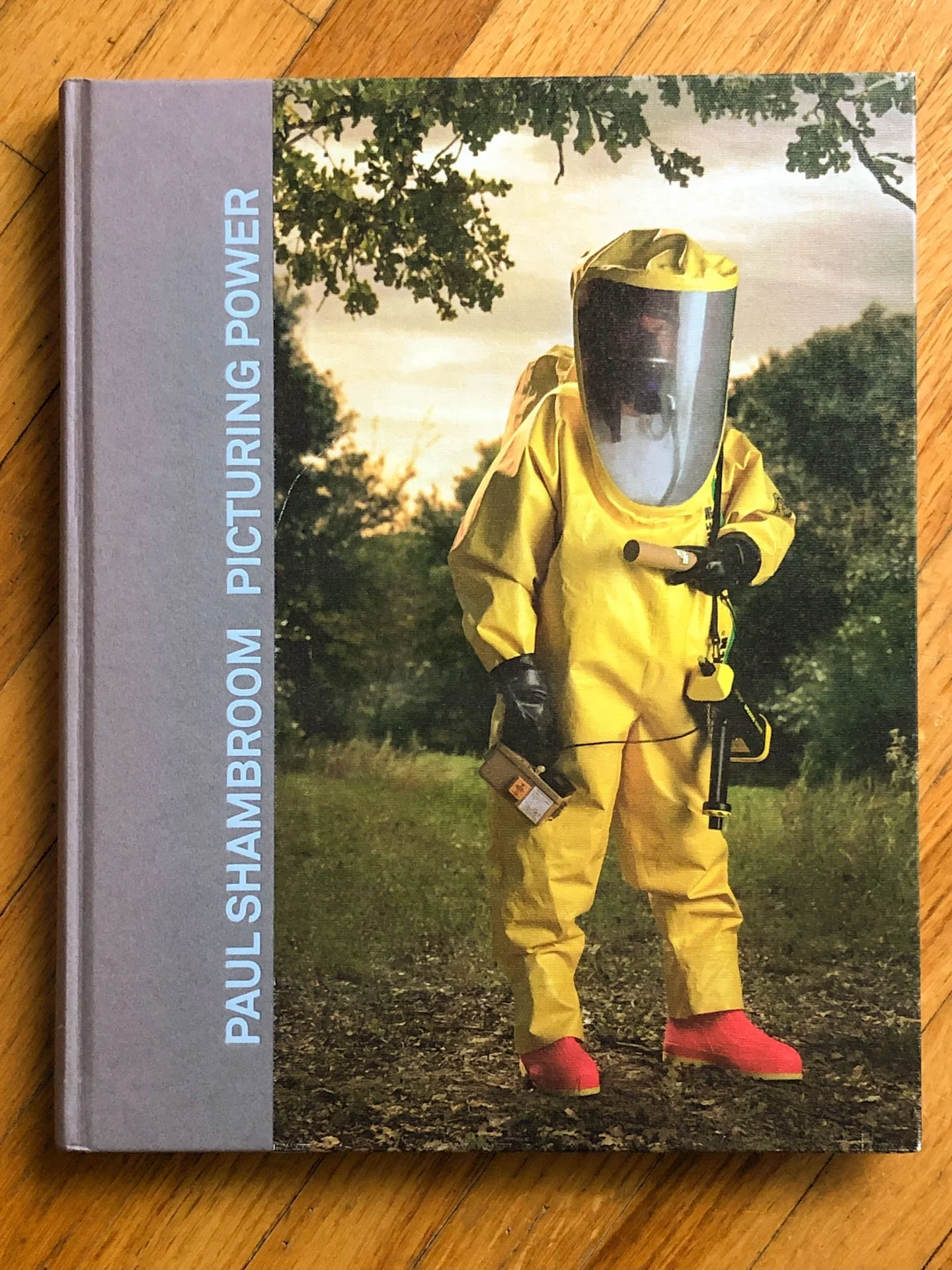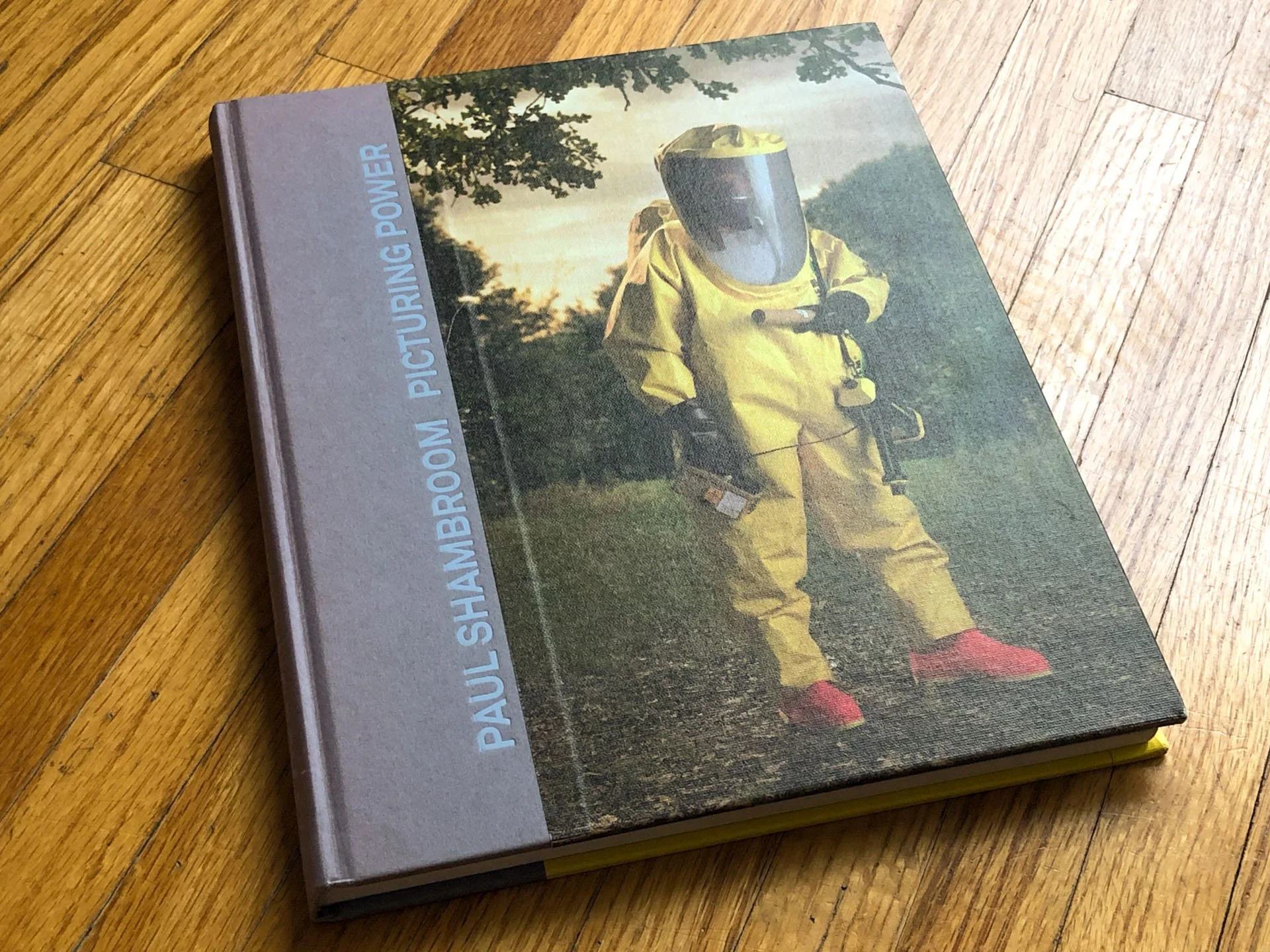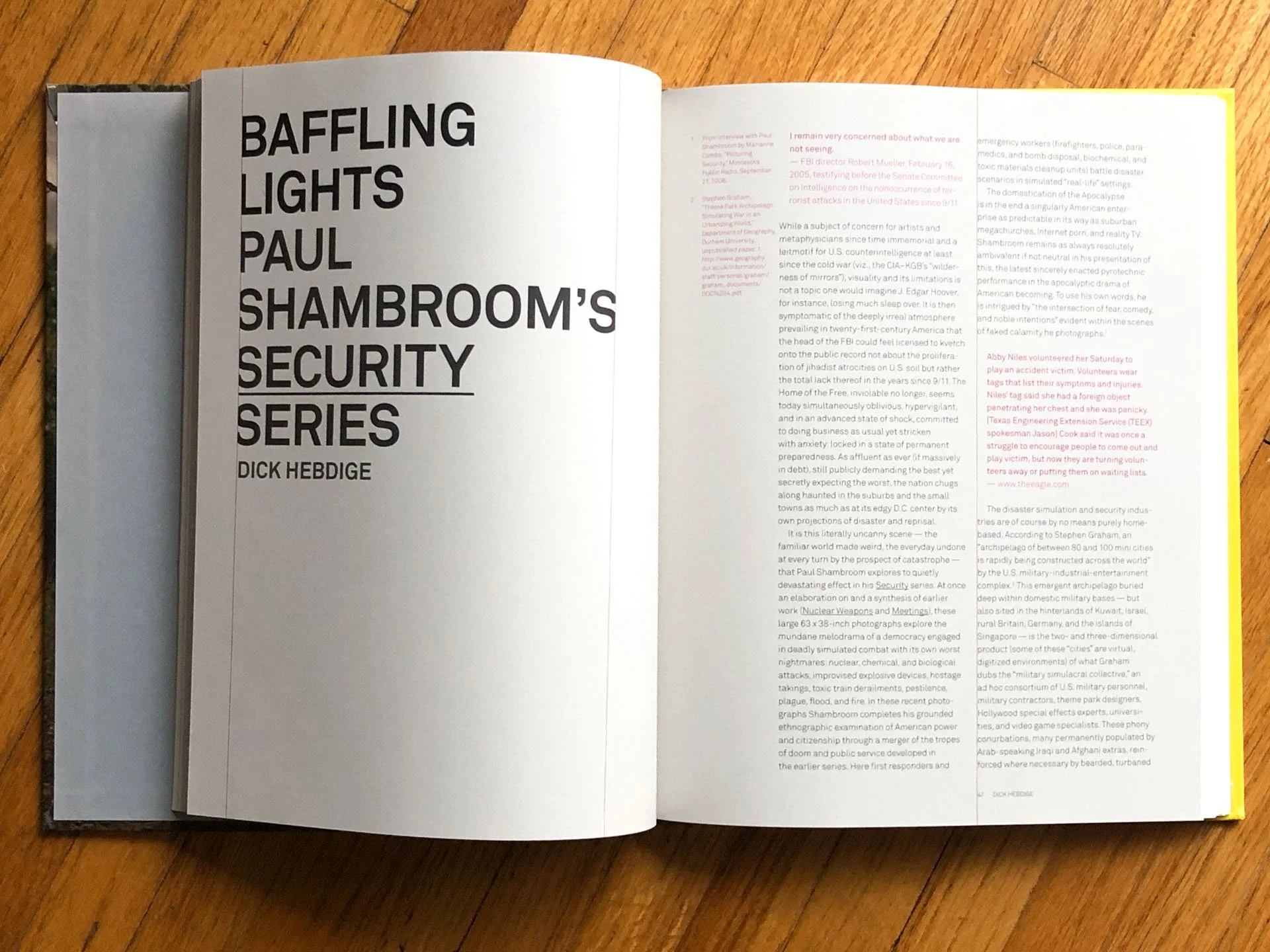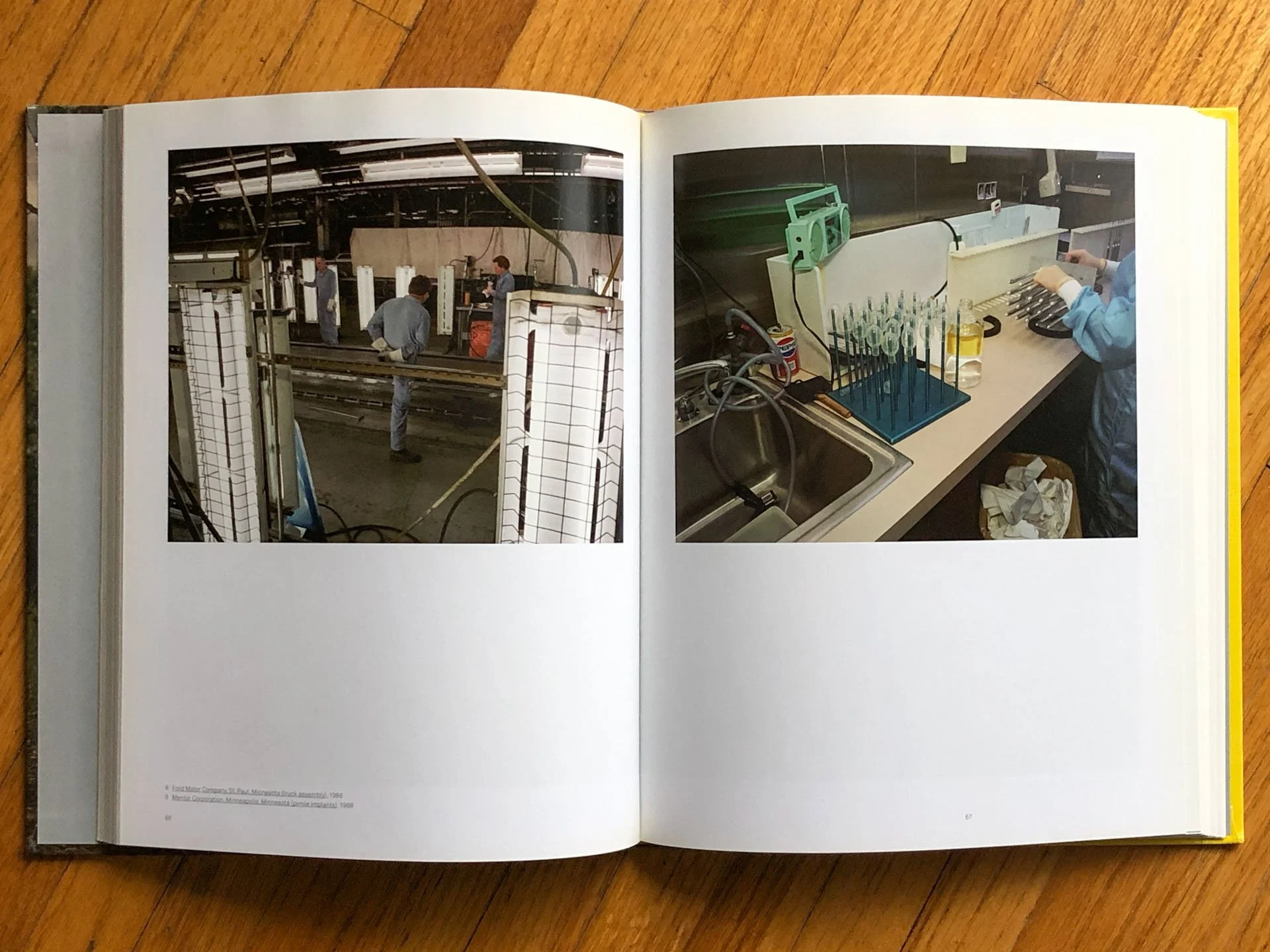Paul Shambroom: Picturing Power (2008, new copy, signed, out-of-print- limited quantity) Published with 2008-09 mid-career traveling exhibition
Paul Shambroom: Picturing Power (2008, new copy, signed, out-of-print- limited quantity) Published with 2008-09 mid-career traveling exhibition
Weisman Art Museum, University of Minnesota, 2008, 160 pages, 9.25 x 0.75 inches. 160 pages, 47 color plates, essays by Dick Hebdige, Diane Mullin, Helena Reckitt, Christopher Scoates. Interview by Stuart Horodner.
Published to accompany documentary photographer Paul Shambroom's extensive 2008-09 American traveling exhibition, Picturing Power is the first volume to bring together selections from all five of his most important--and highly acclaimed--series to date.
In the late 1980s, Shambroom visited manufacturing sites and office spaces to capture the spaces where many Americans spend the majority of their days--from the grittiest industrial factory to the cleanest biotech lab to the smallest, emptiest office cubicle. His next series, Nuclear Weapons, begun in the early 1990s, gained him access to long-restricted nuclear sites, where he produced eerie images of slumbering bombs and immaculate, empty war rooms. For Meetings (1999-2003), Shambroom traveled to municipal meetings in small communities as far flung as Bernice, Louisiana and Baltic, South Dakota, to document public officials in a formal portrait style, calling up both the seriousness and banality of these gatherings. His most recent series, Security (2004-present), documents eerie scenes of security training at special facilities across the country. Past and future, reality and fiction, blur as each figure creates a picture of threat and resistance in our post-9/11 era.
While diverse in subject matter, Shambroom's series all record and demystify secret and little-seen loci of power. His images are remarkable both for their stark portrayal of such places, and as evidence of his access to the sites. Negotiating this access in an open and democratic manner is a hallmark of Shambroom's practice.



